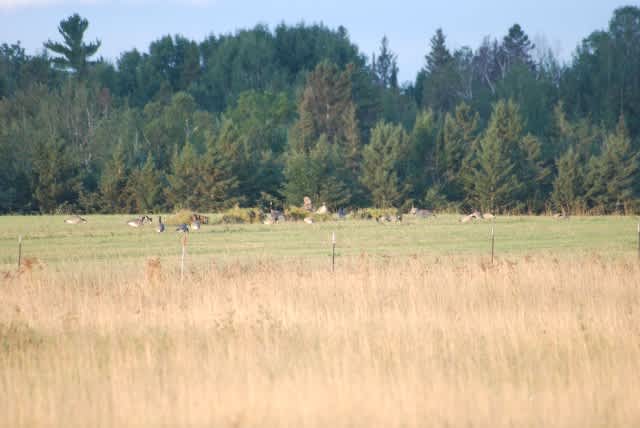Blinds? What Blinds? Proper Concealment for Waterfowl Hunters
Hard Core Decoys 02.21.12

Blind concealment is one of the most important aspects of being a successful goose hunter. In the past, geese were less educated and concealment was not as important. However now, you will find that geese are more educated than ever and being hidden is key. Blinds used to be big, boxy, tall, and plain; but today’s blinds are smaller, camouflaged, and have a low profile. In this article we will talk about the ways to conceal a blind and how it can make your hunt that much more successful.
There are many different types of blinds on the market today. Some are big for more room and comfort; others are smaller and are easier to hide. Pick a blind that fits your needs and the style you hunt. After you buy a blind, it is not necessarily field-ready yet. There is one key thing that needs to be done to the blind. Every new blind will have a shine to it, and in order to get rid of this shine you need to mud the blind. Rub wet mud into the fabric. Don’t be shy; cover the whole blind then let the mud dry. In doing this you will cause the shine to be covered up by the mud and over time the blind will get broken in, causing the shine to disappear on its own.
When concealing blinds for a goose hunt, no matter what the cover you are hunting, make sure the blinds blend in with the natural surroundings. When hunting corn use corn stalks, when hunting wheat use wheat stubble, and so on. Most blinds that are on the market have rows of straps that will help you in holding the natural cover on the blind. The best way to get the material into the straps is to make bundles of grass, stalks, or stubble and place them into the loops. Some types of cover require less material than others, like corn stalks. Corn stalks are bulky and have leaves that help cover a wider area of the blind. When using grass however, you may need to fill every loop in order to conceal the blind. There is also a synthetic type of cover that can be bought and zip-tied to the blind’s loops. This synthetic cover comes in different colors for different field types. Just remember no matter what type of cover you use, the blind should be covered thoroughly. Try to have the blind’s fabric covered up.

Another way you can help hide your blinds in a field is to use the lay of the land. If there is a slight depression in the spot you plan to hunt, use it to your full advantage. Place the blind in that spot. The lower the profile of your blind, the better. In some fields you can dig a little spot out and place your blind in it. Remember, if you do this make sure the land owner gives you permission to dig in his/her field before you do it. Also, if you do use this technique, fill the hole back in when finished with your hunt as a sign of common courtesy. When hunting a field that is hilly, try to place the blinds below the crest of the hill. This way you won’t be silhouetted against the sky when geese come in.
When hunting in snow conditions, concealment can be a little more difficult. Any brown that shows up on the blind will stick out against the white background. Most blind manufacturers have snow covers for their blinds. The majority of snow covers also have the straps on them to help hold corn stalks, wheat stubble, etc. on the blind. If by chance you own a blind that doesn’t have a snow cover, don’t worry. There are alternate solutions that will work. One option is to go to the local convenience store and buy a white sheet. Be careful when buying sheets though, because certain sheets will give off a blue tint when they get wet. Sheets that are more of a synthetic material or plastic will work well and won‘t give off a blue tint when wet. The next option is to buy “snow-in-a-can”. Snow-in-a-can is a spray on synthetic snow that people use during Christmastime for decorations. Snow-in-a-can will also wash out of your blind’s fabric at the end of the season, so you don’t have to worry about having a white blind all year round. Usually you can find snow-in-a-can at convenience stores at the end of the holiday season for cheap. Typically it takes a can and a half to cover a blind, but it depends on the size of the blind.
Hunting geese, whether it be the early, regular, or late season, can be a very enjoyable and rewarding experience. If you use these tips when concealing your blinds on your next hunt, you will notice a difference in how close you can get geese to commit. Good luck, and keep the barrels hot.

